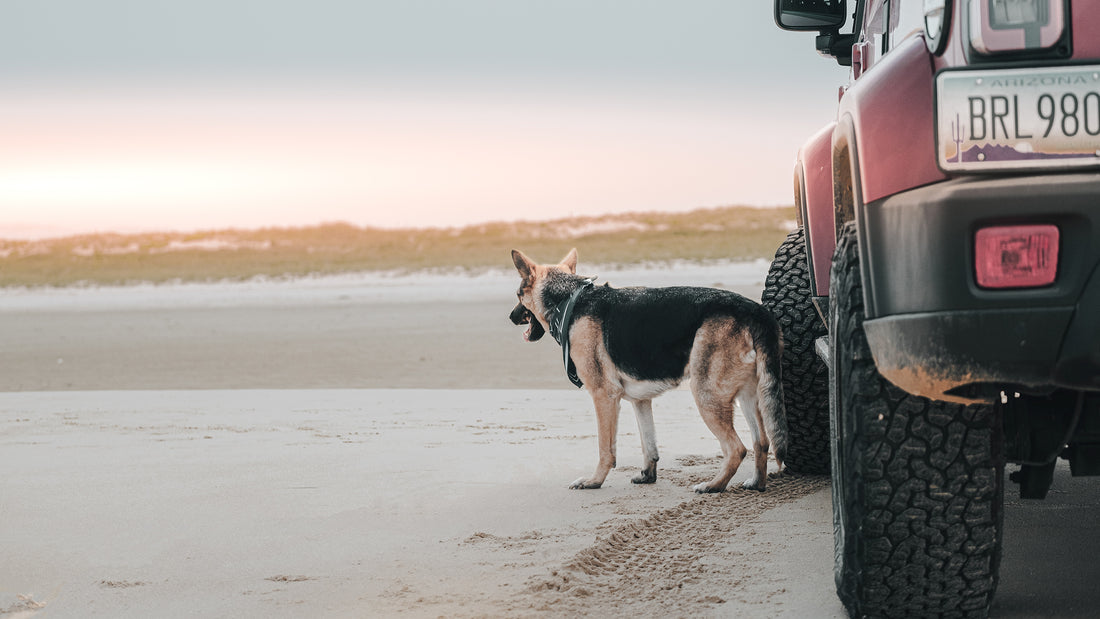5 Essential Keys to Embark Your Next Travel Adventure with Your Dog
Tsung-Chen Xie • 6 min read
5 Essential Keys to Embark Your Next Travel Adventure with Your Dog
Share
Traveling with dogs can be a challenging experience, especially for first-time adventurers. With years of travel experience alongside my faithful canine companion, the founding dog of this brand, I've gathered 5 invaluable insights to help ensure your next adventure with your furry friend goes smoothly:
1. Know the Rules and Regulations
When traveling with a dog, additional accommodations are usually necessary, unless you're embarking on a domestic road trip and camping exclusively. It's crucial to liaise with airlines and hotels to understand their pet policies. For owners of larger breed dogs, it's advisable to directly contact hotels and airlines to confirm their policies because major booking websites like Expedia may not accurately convey restrictions, such as allowing only dogs under a certain weight. When flying with dogs, airlines may transport your pet as luggage, but if your dog carrier is too large, it might need to be handled as cargo. In international travel, being informed is vital to avoid complications at customs. Always plan your trip with your dog in mind. Don't leave your furry friend cooped up in a car or hotel while you explore. Many natural attractions in the United States are dog-friendly, making it an excellent country to explore with your dog. However, in countries like Egypt, Saudi Arabia, India, and China, bringing your dog might be challenging, but not impossible. Advance planning is key to ensuring your dog enjoys the adventure as much as you do.
2. Plan Ahead
If your adventure includes outdoor activities like hiking and backpacking, meticulous planning is a must. Some trails may require permits, so check ahead of time. Assess the terrain and weather conditions to ensure you have the appropriate supplies and gear. For instance, if the trail is rocky, consider getting shoes for your dog to protect their paws. Don't forget to bring rain gear for your dog on wet days. In high-altitude forests or during winter camping, it's a good idea to have extra warm blankets or sleeping bags to keep your dog comfortable during cold nights.
3. Train Your Dog for Adventure
If your dog gets excited easily when they see people or other dogs, it's essential to train them for proper behavior, especially when navigating bustling city streets. Such behavior can be intimidating to pedestrians, as your dog might appear overly eager in trying to greet other dogs and people by pulling on the leash and jumping. However, I, as someone who typically avoids bringing my dog to crowded areas, unexpectedly found a silver lining when my dog pulled on the leash during a strenuous hike on a steep hill. This behavior ended up saving me a considerable amount of energy.
Assess your dog's stamina with extended walks around your neighborhood before you consider bringing them along for a hike. I learned this the hard way when I took our brand's founding dog on her first backpacking adventure, which turned out to be a lengthy and steep trek. She wore out fast, forcing me to carry her in my backpack, significantly extending our journey. Waiting until your dog is fully mature is usually a more prudent choice, as it allows their bones to develop properly.

The brand's founding dog became an advanced hiking gear, adding nothing but an extra 20 pounds to her father's backpack on the Blue Lakes trail in Colorado.
4. Prioritize safety
Always secure your dog with a seatbelt in the car and keep them on a leash when in wild areas or the city to prevent encounters with people or wildlife that could lead to unexpected hazards. Our brand's founding dog, a German Shepherd, would become exceptionally excited at the sight of animals, drawing upon her ancestral herding instincts to try and "shepherd" them. On one occasion, she engaged in a chase with a couple of horses, causing one of them to stumble and fall hard to the ground. The other horses gathered around, seemingly to defend their friend, so I had to quickly retreat with her into our tent to de-escalate the situation. Remember that wild animals, like your dog, are naturally curious, and if they haven't encountered dogs before, they may perceive them as potential threats.
5. Leave No Trace and Protect the Environment:
Responsible adventurers adhere to Leave No Trace principles to minimize their environmental impact, and these principles apply when traveling with your dog. Always clean up after your pet by picking up waste and packing it out. Stick to designated trails to protect fragile ecosystems, and refrain from disturbing wildlife.
By following these five key tips, you can enhance your travel experience with your dog, fostering a safer, more enjoyable adventure for both you and your loyal companion.
